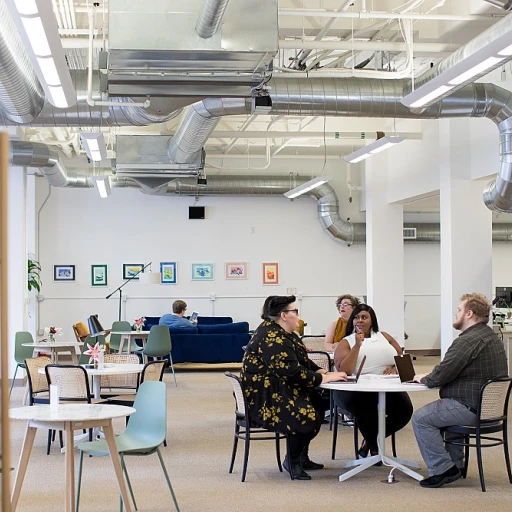
Understanding Topography in Education
Exploring the Role of Topography in Education
Understanding topography is crucial for students, particularly those engaged in earth science and geography. It provides a foundation for comprehending the physical features of the earth, such as mountains, valleys, and plains. Topographic maps are essential tools in this learning process, offering a visual representation of the earth's surface through contour lines that indicate elevation and shape.
In middle school, students will often encounter topographic maps as part of their curriculum. These maps help them grasp concepts like latitude and longitude, scale, and elevation. The contour lines on these maps represent different elevations above sea level, allowing students to visualize the terrain in a specific area. This understanding is further enhanced through activities in a station lab setting, where students can engage with hands-on materials and experiments.
Topography labs are designed to provide students with practical experience in reading and interpreting maps. They often include a variety of materials, such as map sheets and scale maps, to help students learn about contour intervals and vertical exaggeration. These labs are not only about understanding the lines on a map but also about recognizing the real-world implications of these features.
For those interested in continuous learning, it's important to recognize the challenges and best practices in developing topography lab resources. As technology evolves, incorporating digital tools into these labs can enhance the learning experience, making it more interactive and engaging. For more insights on effective theory training in education, you can explore effective theory training resources.
Key Components of Topography Lab Teaching Material
Core Elements for Effective Topographical Education
Developing topographical understanding in students involves several crucial components that educators need to address through their teaching materials. This is not a conventional topic of study, so effectively engaging students with topography labs is vital. Topography labs offer a unique platform for students to explore aspects of earth science through practical activities.- Topographic Maps and Contour Lines: Central to topography education are topographic maps. These maps are crucial in understanding the physical features of an area by representing elevation changes with contour lines. Students will learn how contour lines indicate the shape and elevation of the terrain from sea level. Understanding these maps helps students comprehend real-world applications of topography.
- Activities Tailored for Grade Levels: Tailoring educational activities to specific grade levels enhances learning. For instance, middle school students may engage in basic map reading activities while more advanced students might analyze topographic profiles. Incorporating grade-appropriate materials ensures students can effectively grasp the concepts.
- Utilizing Science Stations for Hands-On Learning: Station labs serve as interactive centers where students can participate in hands-on activities. These labs can simulate real-world scenarios that require students to calculate scale maps, identify latitude and longitude positions, and comprehend the significance of contour intervals.
- Time Effective Material Integration: Practical considerations such as the time required for each activity should be kept in mind. Students will benefit from materials that can be seamlessly integrated into existing curriculums without requiring extensive time.
- Incorporation of Technology: Utilizing digital tools, alongside traditional teaching methods, enhances the understanding of complex topographic features and maps. By leveraging technology, such as interactive map sheets and digital simulations, educators can provide a more engaging learning experience.
Incorporating Technology in Topography Labs
Leveraging Modern Tools in Topography Education
Integrating technology into the learning process has become essential in modern education, particularly in topography, where students benefit significantly from interactive and dynamic resources. Technology influences how students interact with maps, features, and data, offering a more comprehensive understanding of the earth's contours and elevations. For students studying topography, digital tools provide an invaluable resource for examining topographic maps in detail. By using tools that offer zoom and scale features, students can explore contour lines, evaluate elevation profiles, and gain insight into various earth science concepts. Practical activities such as a map lab station can enhance comprehension by allowing students to manipulate digital maps and input data related to latitude and longitude, contour intervals, and other vital aspects of topographic profiles. Moreover, integrating technology allows students to save time required for manual calculations and focus more on data interpretation. Visualizing a topographic map vertically exaggerates features not easily seen on a conventional map sheet, allowing for a deeper understanding of the topography of a specific area. This is particularly helpful at the middle school and higher grade levels, where comprehension of complex contour maps becomes more critical. The continuous evolution of digital resources highlights the importance of providing access to the most up-to-date materials for educators and learners alike. For instance, using interactive platforms or software can help students appreciate the intricacies of scale maps and topographic features at various grade levels. These platforms allow for richer engagement and the integration of practical applications within the classroom setting, such as creating a topographic profile or analyzing sea level impacts on specific earth areas. These advancements in technology within topography labs not only augment the traditional method of teaching but also prepare students for real-world applications of their skills. Continuous learning and adaptation to new tech tools place students at an advantage, allowing them to explore more comprehensive educational resources and methodologies.Challenges in Developing Topography Lab Resources
{"Overcoming Development Hurdles in Topography Labs
Creating effective topography lab resources presents its unique set of challenges. While integrating tools that effectively teach earth science and the intricacies of topographic maps is undeniably beneficial, several hurdles must be navigated to make these educational materials truly impactful.
One of the main challenges is ensuring the accuracy and quality of the materials. With concepts like elevation, contour lines, and scale map interpretations being critical components, it is essential that these educational tools accurately reflect real-world data and scenarios. Topographic maps, often used in labs, must be aligned with precise geographic information to provide meaningful learning experiences for students.
Another hurdle stems from resources and accessibility. Educational institutions vary in their ability to provide up-to-date materials and technology, directly affecting the quality of student learning. Teachers and facilitators have to navigate diverse technology and resource availability while aiming to deliver consistent and quality education across different grade levels, from middle school to higher education.
Furthermore, student engagement is a vital aspect that requires focus. The complexity of concepts such as latitude longitude coordinates on a map sheet, contour interval, and vertical exaggeration can be overwhelming for students. Educators need to find ways to break down these concepts into digestible segments via structured activities and station lab setups. Interactive activities that creatively explore contour maps and topographic profiles help demystify these subjects.
The time required for developing and updating materials poses an additional strain. With ever-evolving technology and frequent updates in scientific data, educators often find themselves caught between managing current teaching needs and investing time in researching new developments. It requires a balance of science knowledge and patience to consistently update these resources.
Lastly, the scalability of the lab resources can be a concern. Complex earth science features and the many nuances of topographic maps necessitate material that is relevant to diverse learning environments. Designing scalable resources that can adapt across various grade levels and class sizes without losing instructional value is a perpetual challenge.
Best Practices for Continuous Learning in Topography
Effective Strategies for Mastering Topography
Promoting continuous learning in the field of topography requires well-thought-out practices that cater to different learning styles and educational levels. The following strategies can enhance the topography learning experience for both educators and students.- Interactive Learning Environments: Creating an engaging atmosphere in the lab is paramount. By utilizing hands-on activities, such as map labs and station labs, students can better understand topographic features like contour lines and elevation. These practical exercises enable learners to visualize and manipulate real-world examples, helping them grasp concepts like vertical exaggeration and contour intervals.
- Diverse Materials and Resources: Providing a range of topographic maps, contour maps, and digital resources allows students to compare and contrast different geographical features. Maps of various scales and latitude-longitude coordinates add depth to the learning experience, allowing students to appreciate the intricacies of places from middle school level to advanced grade levels.
- Time Allocation and Planning: Adequate time is essential for successful learning outcomes. Teachers should allocate sufficient time for each station, activity, or map lab, allowing pupils to fully engage with the materials at hand. This approach ensures that students will learn at their pace, catering to diverse learning speeds.
- Segmented Learning Goals: Implement clear, incremental learning objectives. Begin with fundamental concepts like understanding topographic maps and gradually progress to more complex topics, such as creating topographic profiles and interpreting contour intervals.
- Feedback and Assessment: Regular assessment and feedback are crucial. Evaluate students’ understanding of the material through quizzes and practical demonstrations in the lab. This allows for a continuous learning loop where students can refine their knowledge over time based on constructive insights from their performance.
Future Trends in Topography Education
Emerging Directions in Topography Education
As we look to the future of topography education, several trends are poised to reshape how students engage with this crucial aspect of earth science. These developments aim to enhance the learning experience, making it more interactive and aligned with real-world applications.
One significant trend is the integration of advanced technology in topography labs. While previous sections discussed the incorporation of technology, the future promises even more sophisticated tools. Augmented reality (AR) and virtual reality (VR) are expected to play a pivotal role, allowing students to explore topographic maps and contour lines in a 3D space. This immersive experience can help students better understand complex concepts such as elevation and vertical exaggeration.
Another promising direction is the use of real-time data in educational materials. With the increasing availability of satellite imagery and geographic information systems (GIS), students will have access to up-to-date topographic data. This real-time information can be used to create dynamic map sheets that reflect current earth features, providing a more relevant learning experience.
Moreover, the emphasis on personalized learning is growing. Educational resources are being developed to cater to different grade levels, allowing for a more tailored approach. For instance, middle school students might focus on basic concepts like contour intervals and latitude longitude, while more advanced students could delve into detailed topographic profiles and scale maps.
Finally, collaborative learning is gaining traction. Station labs and group activities encourage students to work together, fostering a deeper understanding of topographic maps and the science behind them. This collaborative approach not only enhances learning but also prepares students for real-world scenarios where teamwork is essential.
As these trends continue to evolve, educators and developers face the challenge of creating materials that are both engaging and educational. By staying informed about these emerging directions, educators can better prepare students for the future of topography and earth science.












